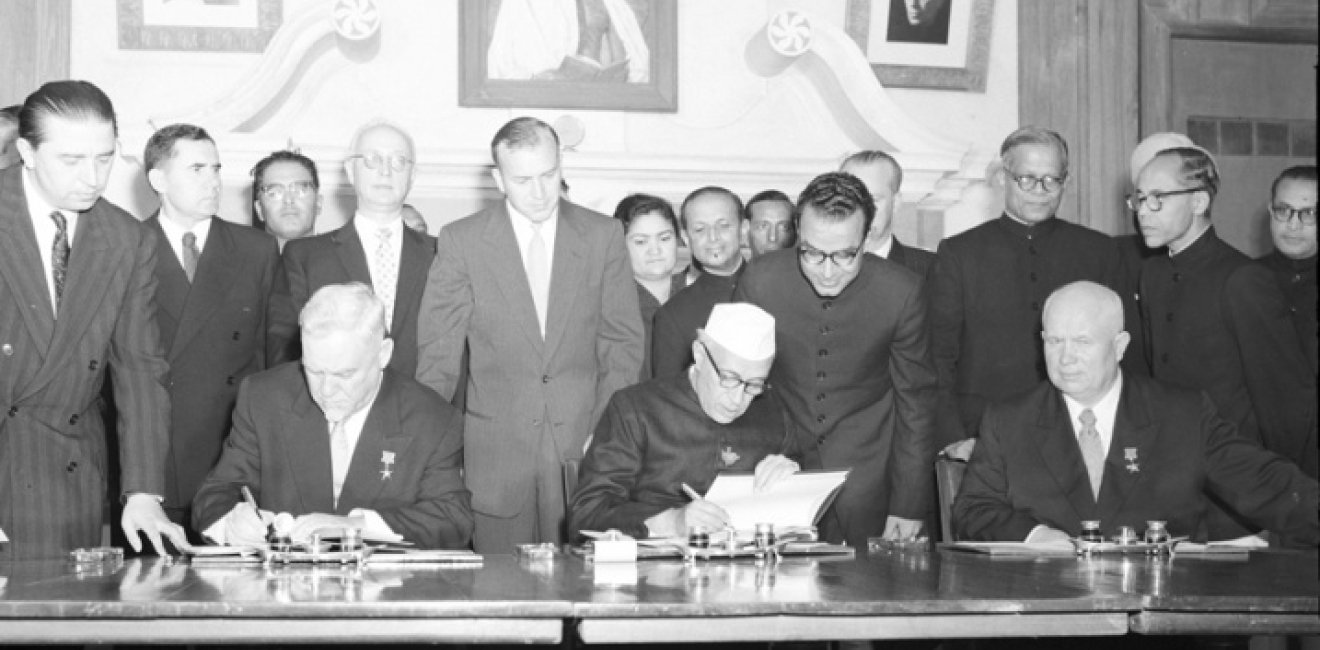In an earlier post for this blog, I lamented the lack of scholarly attention to the roles that Indian diplomats played in Cold War international politics. In a newly published paper, I try to substantiate this claim by showing the influence that early Indian diplomatic practice had upon world diplomacy.
One of the key takeaways of my article is that studying the establishment and early years of the Indian Foreign Service is important – not just for appreciating the institutional history of the IFS, but also for advancing the diplomatic history of the Global South on topics such as the impact of the Asian-African bloc at the United Nations.
While conducting research for the article, I interviewed some of the earliest recruits to the IFS to ask them about their impressions of life in the Foreign Service and their views on non-aligned Indian diplomacy and of Nehru, the first Indian Prime Minister and Foreign Minister, and the most visible icon of India’s international relations.
Several themes recurred throughout my interviews and oral histories. First, young men and women joined the Indian Foreign Service from the Indian Civil Service, the Indian Political Service, and Subhash Chandra Bose’s Indian National Army because they were energized by Nehru’s calls to make India a compelling force in world politics.
Second, even though Nehru’s personality and politics may have drawn young officers to the cause, the IFS rather quickly grew independent of him. Officers displayed a great deal of autonomy, debating and dissenting amongst themselves, but also with Nehru when it came to matters significant to India’s interests.
Two episodes that illustrate these larger themes came up often in my interviews: first, India’s struggle to establish ties with the Soviet Union, and second, the early debates surrounding the place of women within the Foreign Service.
I have written about the resounding success of Nehru’s visit to Moscow in 1955. But before 1955, came 1953, when Stalin had not yet deigned to meet India’s envoy to the Soviet Union (and later President of the United Nations General Assembly), Madame Vijaya Lakshmi Pandit.
Between 1953 and 1956, Indian envoys in Delhi and in Moscow did all they could to precipitate a thaw in the Soviet Union’s outlook on India in general and on the Nehru-led government in particular. With India’s participation in the Neutral Nations Repatriation Commission at the end of the Korean War, and Stalin’s approval of the successor to Madame Pandit, Ambassador S. Radhakrishnan, relations gradually came to fruition. They were hastened by mutual state visits by Nehru to the Soviet Union and Bulganin and Khrushchev to India.
This was an exciting early chapter for the nascent Indian Foreign Service – and one I study in detail in chapter titled “The Soviet Peace Offensive & Nehru's India, 1953-1956” that recently appeared in India and the Cold War.
Second, an issue remembered, often with regret and sadness, by many interviewees was the debates surrounding the place of women in the IFS. Early entrants to the foreign service were often asked to sign an oath saying they would leave the service if they married, thus depriving Indian diplomacy of early recruits such as Rama Mehta and Mira Sinha Bhattacharjea. This was a rather orthodox position for such a radical new organization like the IFS to have taken, although not unusual for the times.
Discrimination against women had plagued the service since its inception. Indeed, Sir Hugh Weightman, who had stayed on as Foreign Secretary till 1947, counselled against the inclusion of women at all. But Nehru, in a note in his own handwriting, concluded quite emphatically that women should be allowed in, in keeping with the times.
This tenor did not extend to rules around women’s recruitment. One of the ex-diplomats that I interviewed highlighted this discrimination, saying that the fact that women could not marry without permission from the government, or that they could not marry foreign nationals, was particularly unfair, given the otherwise progressive nature of the service. Early feminist pioneers such as C.B. Muthuamma protested gender discrimination within the Foreign Service, paving the way for later women recruits such as Arundhati Ghose. After all, the service was elevated by the presence of women such as Savitri Kunnadi and Chokila Iyer in leading roles.
These and other insights are discussed in fuller detail in the paper where I make the argument that it is much more useful than drawing out post-colonial continuities to look at the radical decolonizing of diplomacy attempted by the Indian Foreign Service, by its mere presence but also through the unique methods in its employ.







